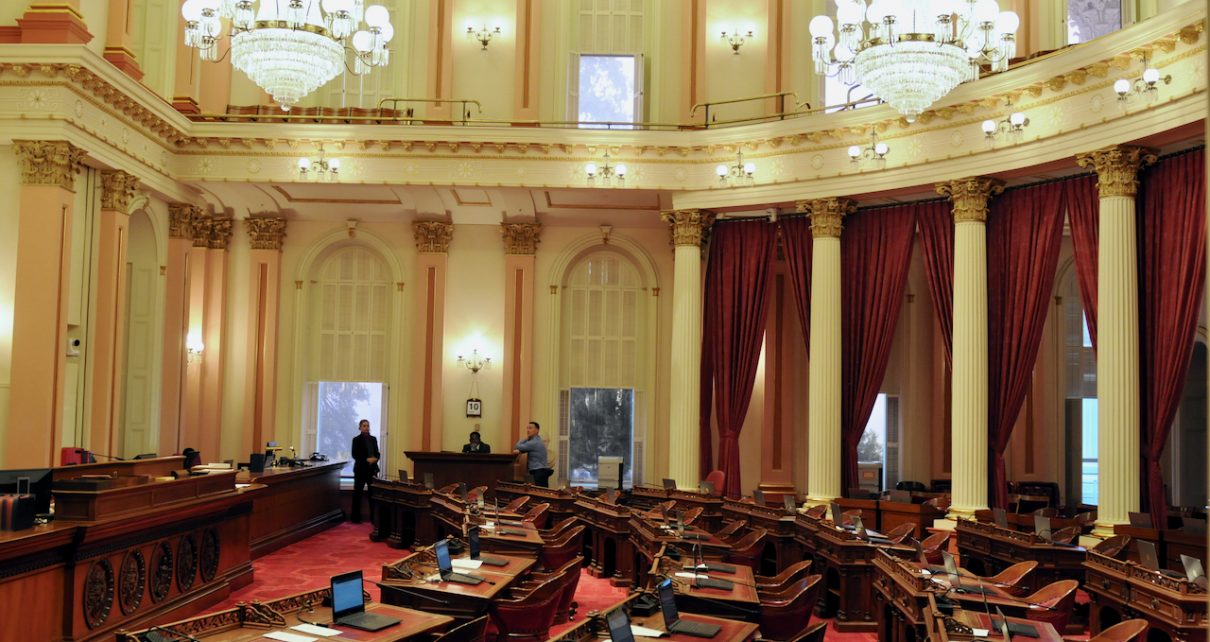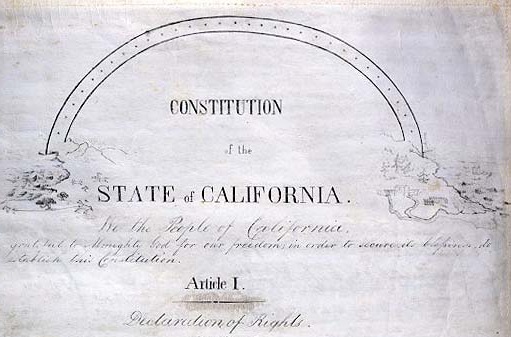
California Senate Chambers. (Photo: Kevin Sanders for California Globe)
Why Is a Constitutional Amendment Given a Resolution Chapter?
Chapter numbers are assigned to bills in numeric order as they are enacted into law
By Chris Micheli, January 25, 2023 6:22 am
When a bill has been enacted by the Legislature and signed into law by the Governor, the last step in the legislative process is the ministerial duty of the Secretary of State to assign a “chapter number” to that enacted bill. According to the Office of Legislative Counsel, “after a bill has been signed by the Governor, the Secretary of State assigns the bill a Chapter Number, for example, ‘Chapter 123, Statutes of 1998,’ which subsequently may be used to refer to the measure.”
Chapter numbers are assigned to bills in numeric order as they are enacted into law. And, the chapter numbers are used for only a single calendar year legislative session (rather than the 2-year session). That means that, at the start of each calendar year, the Chapter numbers begin with “1.” In the 2022 Legislative Session, there were 997 chaptered laws.
In addition, two of the three types of resolutions (not including house resolutions) in the California Legislature are assigned “resolution chapter” numbers in the same manner as a bill. All Joint Resolutions and Concurrent Resolutions (they two types of resolutions that must pass both houses of the Legislature)
The Office of Legislative Counsel defines a concurrent resolution as “a measure that can be introduced in either House, but must be approved by both Houses and filed with the Secretary of State to take effect. The Governor’s signature is not required. These measures usually involve the business of the Legislature (e.g., adoption of the Joint Rules).”
Joint Resolutions are defined by the Office of Legislative Counsel as “a resolution expressing an opinion about an issue pertaining to the federal government; forwarded to Congress for its information. Joint resolutions require the approval of both the Assembly and Senate but do not require approval by the Governor.”
What about constitutional amendments passed by the Legislature and put before the voters? A Senate Constitutional Amendment (SCA) or an Assembly Constitutional Amendment (ACA) that passes both house of the Legislature by a 2/3 vote are “chaptered” by the Secretary of State (the Governor does not take any final action on a constitutional amendment).
For example, in the 2022 Legislative Session, SCA 10 (Atkins) shows for its final history: “Chaptered by Secretary of State. Res. Chapter 97, Statutes of 2022.” Why does it say “Res.” In front of Chapter? Because it is not given a bill chapter number, rather an ACA or SCA is given a “resolution chapter.” Why is that?
Because a constitutional amendment adopted by the Legislature proposed an amendment for consideration by the People. For example, SCA 10 is “a resolution to propose to the people of the State of California an amendment to the Constitution of the State, by adding Section 1.1 to Article I thereof, relating to fundamental rights.” As a result, a constitutional amendment receives a Resolution Chapter number, rather than a bill Chapter number.
- Jurisdiction in Certain Civil Actions - May 29, 2025
- California Recreational Boating Trails - May 28, 2025
- Default by Lessors - May 27, 2025






